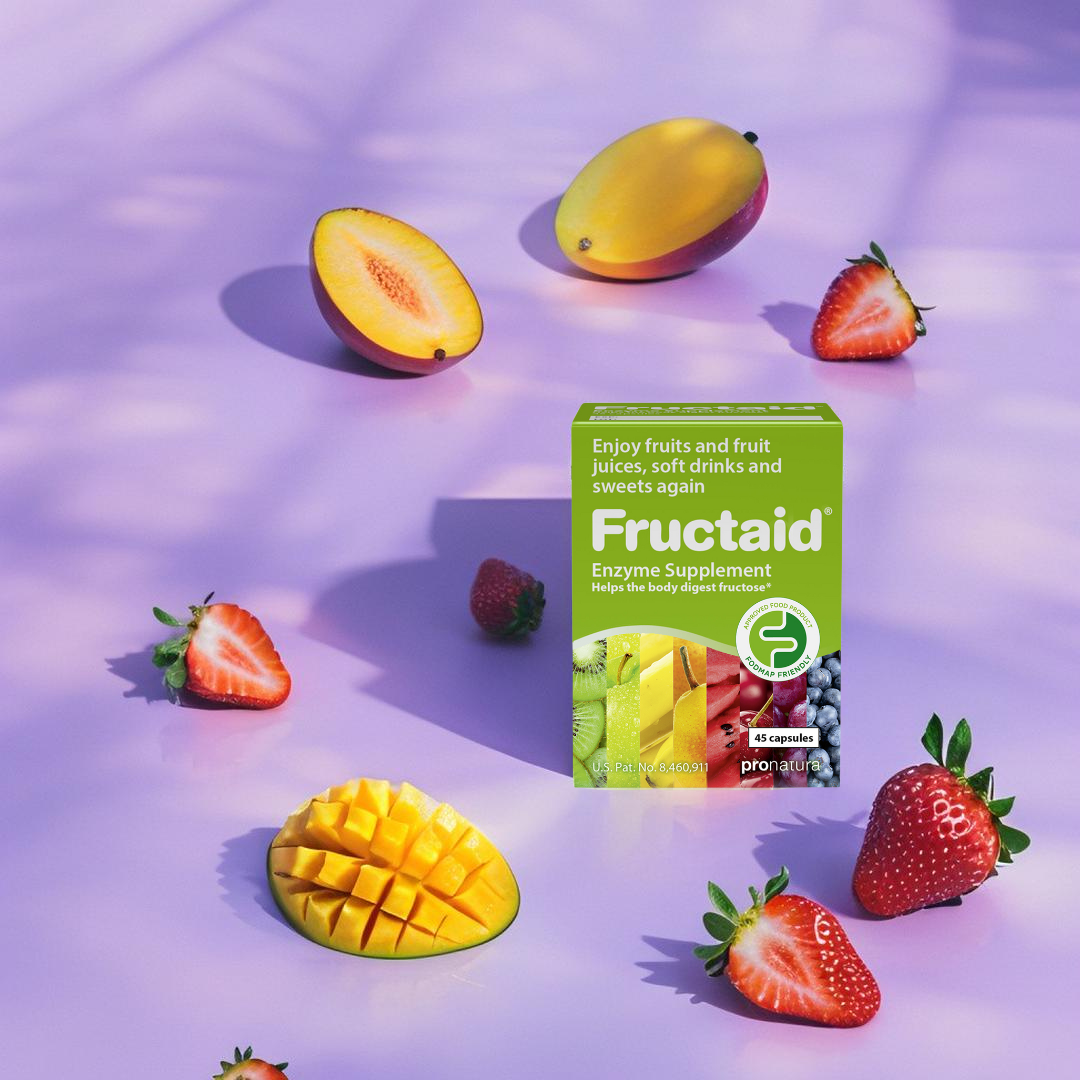

Fructose Intolerance
What is Fructose Intolerance?
-
Normally
Fructose enters the small intestine as a simple sugar (e.g., from fruit) or in bound form (via sucrose), where it is released. Fructose and glucose are then absorbed from the small intestine.
-
Fructose malabsorption
Fructose is not absorbed in the small intestine, causing it to enter the large intestine. There, it is fermented by intestinal bacteria. The consequences: digestive problems such as bloating, abdominal cramps, and diarrhea. Intestinal fructose intolerance is caused by inadequate absorption of fructose in the small intestine.
-
What does Fructaid® do?
Fructaid® contains the enzyme glucose isomerase, which converts fructose directly in the chyme into glucose in the small intestine – without absorption into the body. This effectively alleviates or prevents the symptoms resulting from fructose malabsorption.
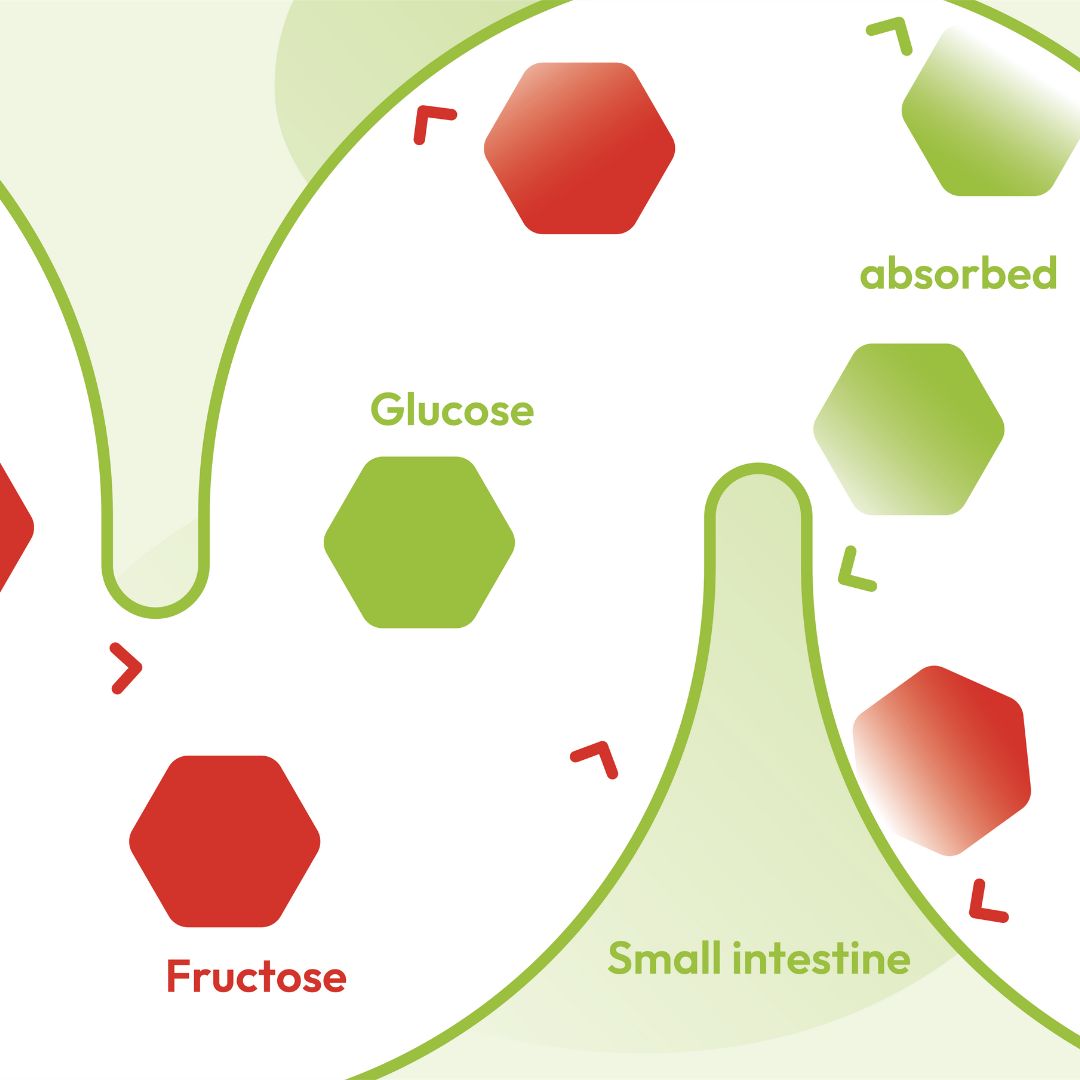
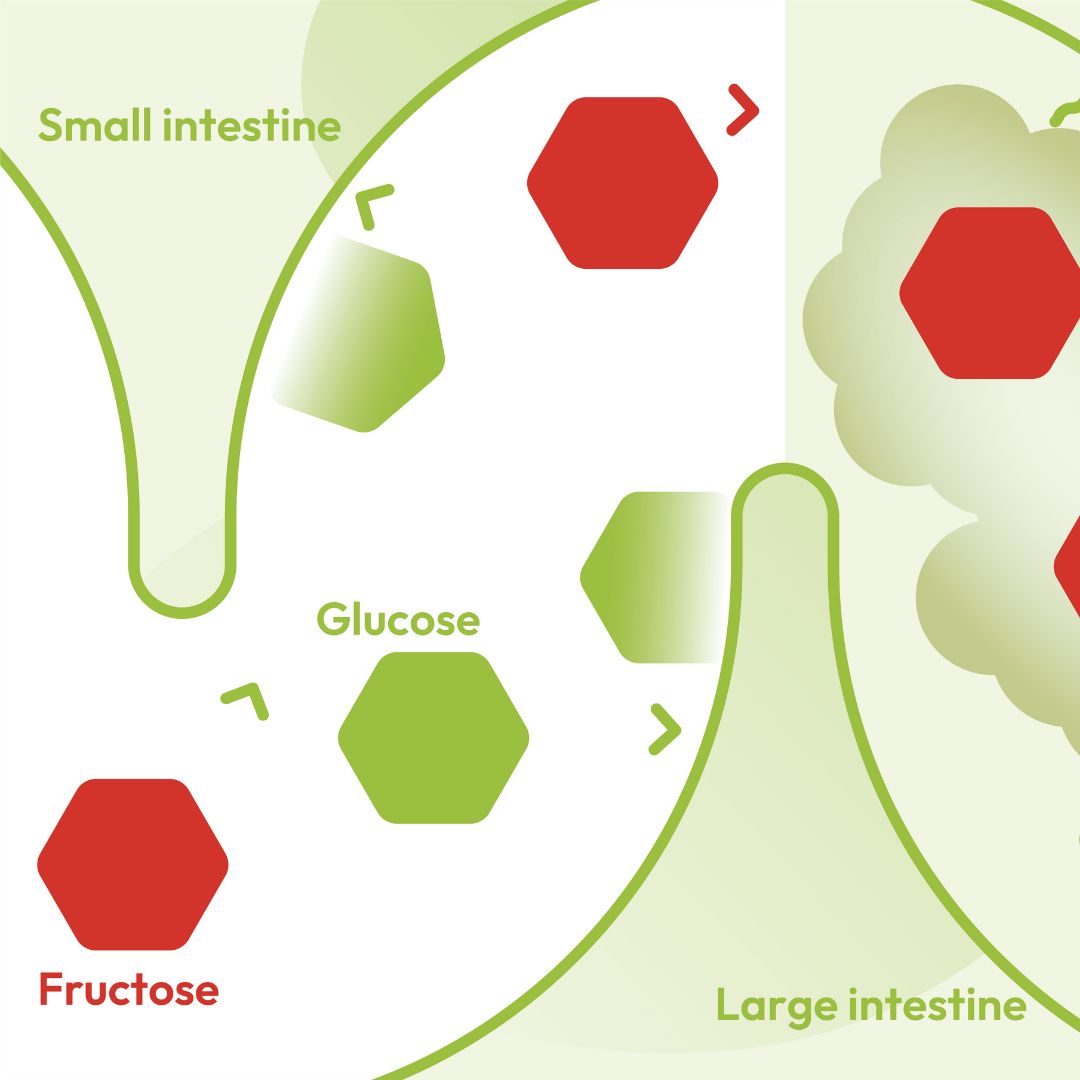
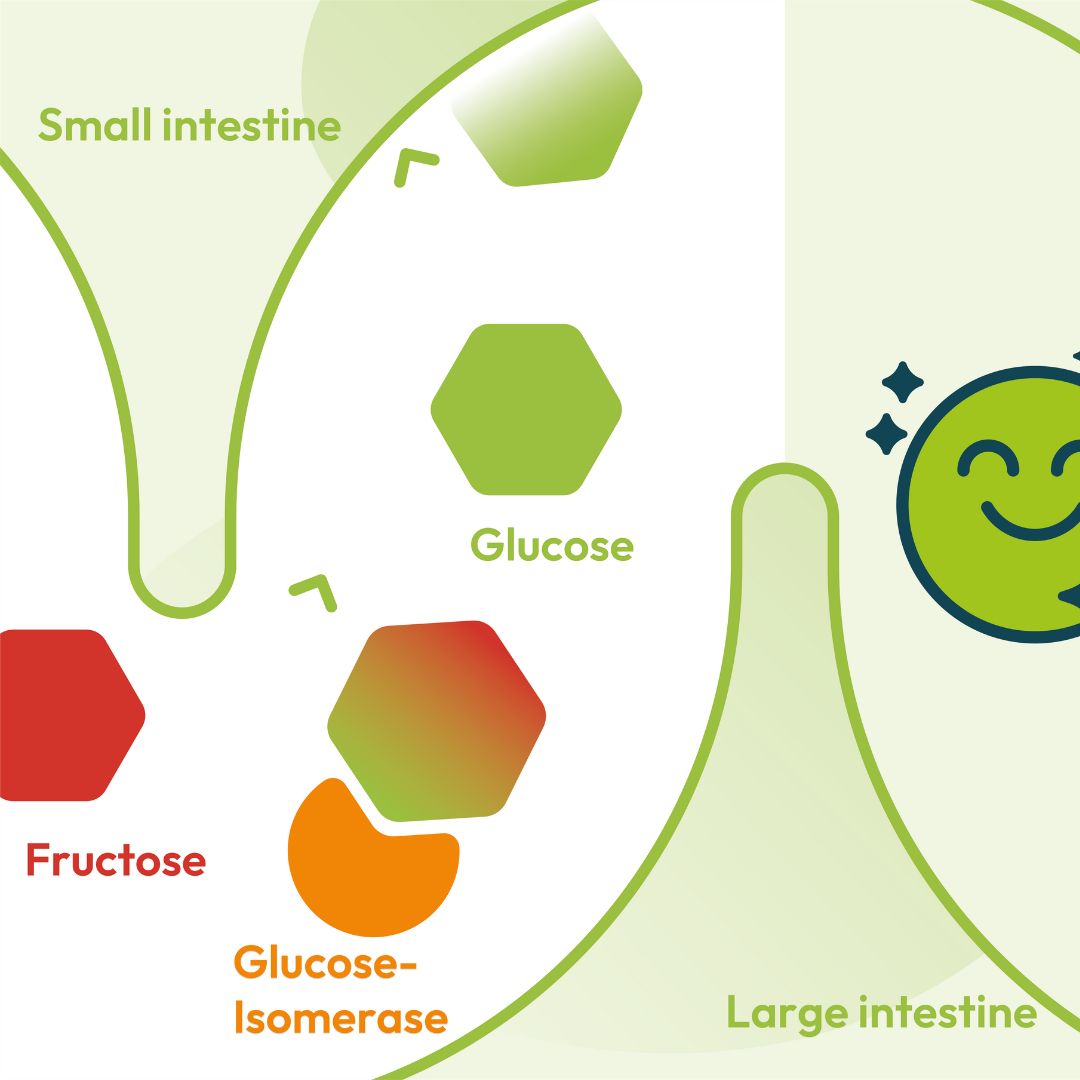
Forms of fructose intolerance
Medicine distinguishes between two types of fructose intolerance. The most common form is intestinal fructose intolerance (IFI), which is caused by insufficient absorption of fructose in the small intestine. Fructaid® capsules were developed for this type of fructose intolerance.This must be distinguished from the very rare hereditary fructose intolerance (HFI), a congenital metabolic disorder.
How is intestinal fructose intolerance diagnosed?
Careful self-observation is sometimes enough to link digestive problems, nausea, abdominal pain, or bloating to the consumption of fructose-containing foods and beverages. However, since symptoms often appear several hours later, and many unexpected foods contain fructose, sufferers are often unaware that their digestive problems are fructose-related. Those seeking clarity can have an H2 breath test performed. This test is usually performed by gastroenterologists. The costs are covered by health insurance.
Hereditary fructose intolerance
Hereditary fructose intolerance is a very rare (incidence approximately 1:20,000) metabolic disorder that begins in infancy. In those affected, fructose is absorbed normally in the small intestine, but an enzyme is missing in the liver, preventing the absorbed fructose from being properly metabolized. Fructaid® is not intended for use in cases of hereditary fructose intolerance.
Hereditary fructose intolerance (HFI) can be diagnosed via a blood sample using a human genetic test.
Every third person is affected
If you suffer from intestinal fructose intolerance, you belong to a large and growing group. In Germany, an estimated one in three adults and two in three children are affected ( German Nutrition Society ). Fructose intolerance caused by malabsorbed fructose is therefore widespread and is colloquially referred to as fructose intolerance. In fructose malabsorption, fructose enters the large intestine, where it is fermented by intestinal bacteria, producing gas and can also cause an increased influx of water. This leads to digestive problems in those affected after consuming foods containing fructose, such as:
- Flatulence / bloated stomach
- Increased urge to defecate or diarrhea
- Irritable bowel syndrome
- nausea
- Abdominal pain / abdominal cramps
- feeling of fullness
The type and severity of symptoms can vary greatly from person to person. Their exact causes are unknown, and they can occur at any age without any apparent cause. Even those who have lived for decades without symptoms of this kind can develop fructose malabsorption for no apparent reason. However, it is known that it is often associated with lactose intolerance. Many sufferers therefore have difficulty tolerating both lactose and fructose.
Symptoms often only appear hours later
Fructose intolerance symptoms often only appear hours after consuming foods containing fructose, such as fruit, vegetables, fruit juices, and foods containing regular table sugar (granulated sugar). Therefore, they are often not associated with fructose intolerance. In many cases, those affected do not make a connection between their symptoms, which occur in the evening or at night, for example, and the fruit juice consumed for lunch or the coffee, tea, or cake sweetened with granulated sugar. Yet, in Germany, approximately 70% of children and over 30% of adults are affected by fructose intolerance.
Irritable bowel syndrome and fructose intolerance
Irritable bowel syndrome can be a fructose intolerance
Digestive problems such as diarrhea, bowel movements, bloating, or nausea can be caused by either irritable bowel syndrome (IBS) or fructose intolerance. Fructose intolerance is much more common than you think. Furthermore, approximately 44% of those who actually have irritable bowel syndrome (IBS) also suffer from fructose intolerance (fructose malabsorption) and experience a significant improvement in their symptoms when following a low-fructose diet.
60% of irritable bowel syndrome patients are intolerant to lactose, fructose and sorbitol
It's also important to know that over 60% of IBS patients who have lactose intolerance (milk sugar intolerance) also have fructose and sorbitol intolerance (S3 Guideline on Irritable Bowel Syndrome, p. 263). Therefore, if someone has lactose intolerance in addition to irritable bowel syndrome, they often also have fructose intolerance, although they may not be aware that they have it. In these cases, it's not enough to simply pay attention to the milk sugar (lactose) in their diet and use lactase supplements when consuming lactose-containing foods (www.lactrase.de), since fructose, which is widely found in food, also triggers the typical symptoms of IBS.
Fructaid ® – very easy to use
Whether at home or on the go, whether it's a quick snack or a lavish dinner at a restaurant – Fructaid®is your reliable aid for preventing or relieving digestive discomfort caused by fructose malabsorption. Fructaid®comes as an easy-to-swallow capsule in a convenient, perforated tear-off blister. This allows you to take individual capsules with you on the go.
How do I take Fructaid ® correctly?
Fructaid® is taken before a fructose-containing meal. Please remember that fructose is also found in many beverages, such as fruit juices and all beverages sweetened with regular table sugar .
For best results, take 1 to 4 capsules with liquid a few minutes before eating or drinking fructose-containing foods or beverages, but no more than 16 capsules per day. If you don't know whether a meal or beverage contains fructose, you can also take Fructaid ® as a precaution, as Fructaid ® has no adverse effects. However, children weighing 16 kg or more should not take more than 10 capsules or their contents per day.
Individual dosage
Every body is different. Therefore, the degree of sensitivity to fructose in food also varies. It's best to test for yourself which amount of Fructaid®is right for you. This depends not only on your personal sensitivity but also on the fructose content and composition of the food or beverage consumed. Typically, 1–4 capsules per meal are sufficient.
Which foods contain Fructose?
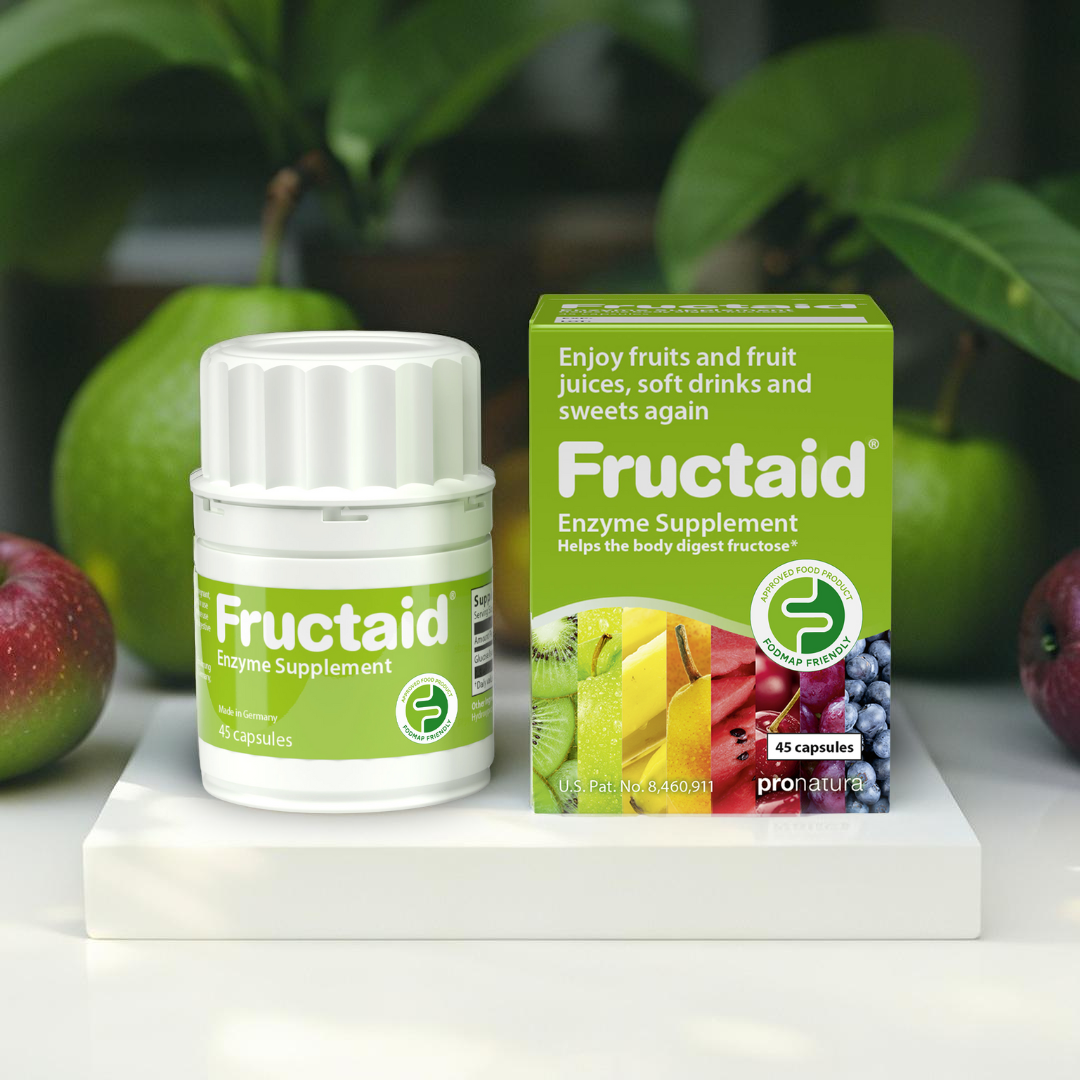
Fructaid®
Fructaid® helps people with fructose intolerance by converting fructose into glucose in the small intestine.
The enzyme glucose isomerase, shown in orange, binds to fructose (red) and transforms it into glucose (green), which is easier to absorb. This process happens in the small intestine, preventing digestive discomfort and supporting a healthy, happy gut in the large intestine.








